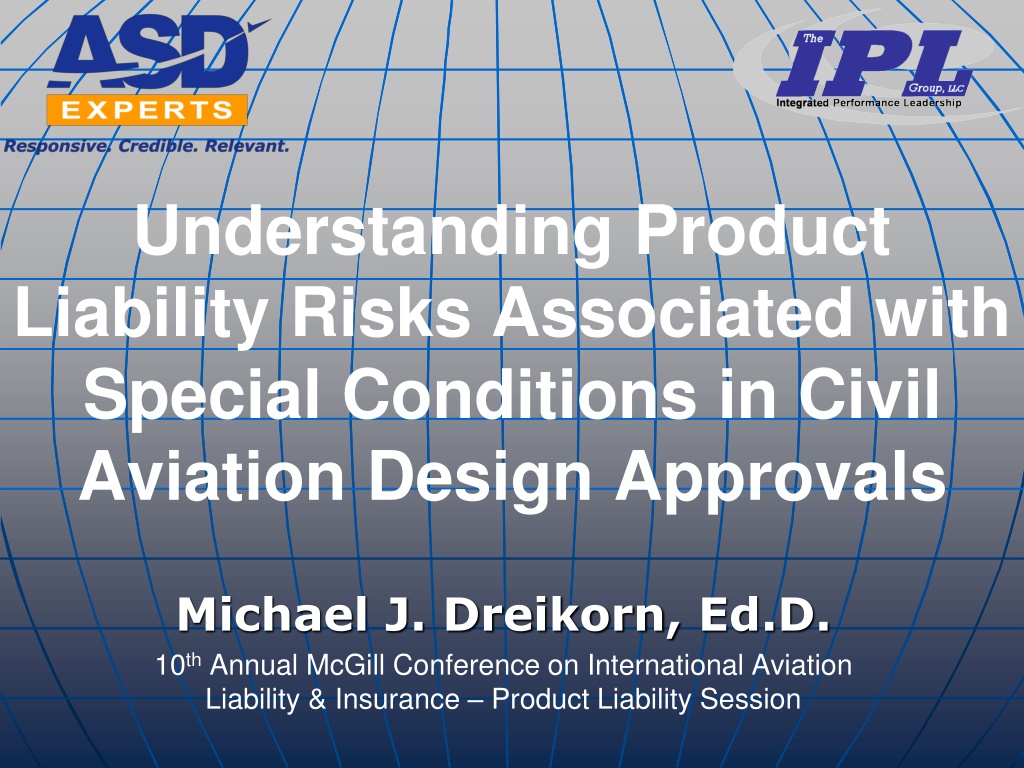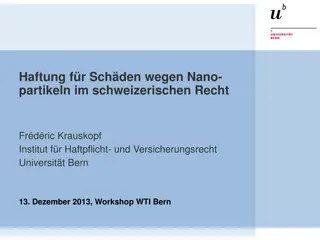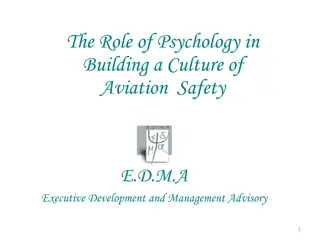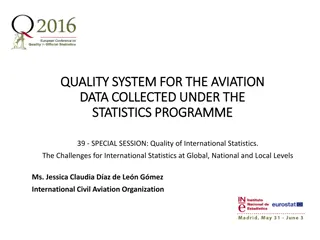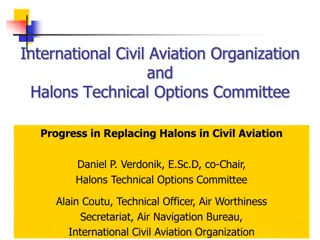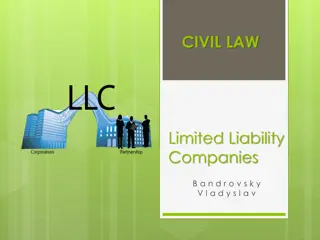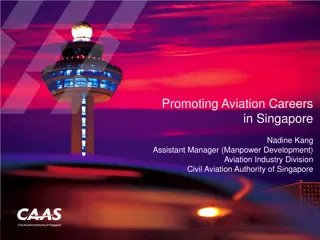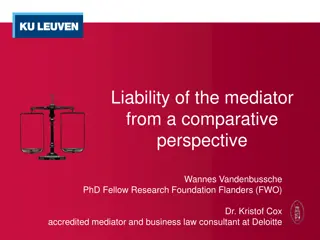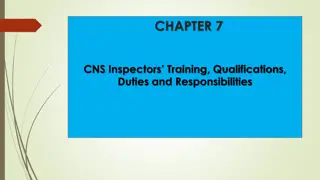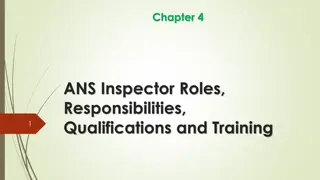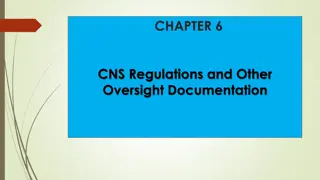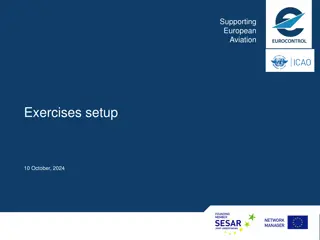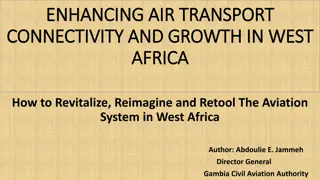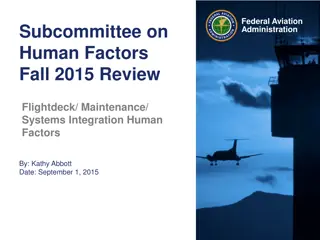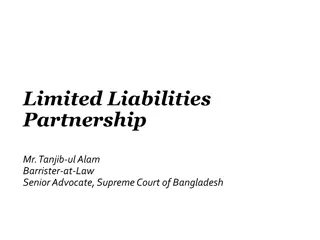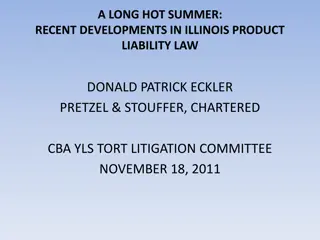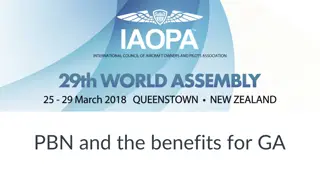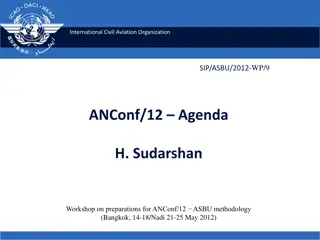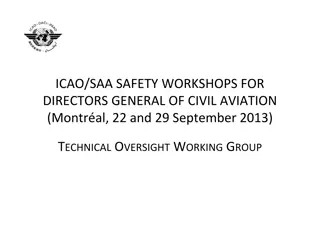Special Conditions and Product Liability Risks in Civil Aviation Design Approvals
Explore the world of special conditions in civil aviation design approvals, uncovering the associated product liability risks. Delve into regulations, examples, and critical considerations for aircraft certification. Discover unique features such as composite structures, fire protection requirements, and electronic systems ensuring aircraft safety and compliance.
Download Presentation

Please find below an Image/Link to download the presentation.
The content on the website is provided AS IS for your information and personal use only. It may not be sold, licensed, or shared on other websites without obtaining consent from the author. Download presentation by click this link. If you encounter any issues during the download, it is possible that the publisher has removed the file from their server.
E N D
Presentation Transcript
Understanding Product Liability Risks Associated with Special Conditions in Civil Aviation Design Approvals Michael J. Dreikorn, Ed.D. 10thAnnual McGill Conference on International Aviation Liability & Insurance Product Liability Session
Familiar Civil Design Certification Regulations Part 21: CERTIFICATION PROCEDURES FOR PRODUCTS AND ARTICLES Part 23: NORMAL, UTILITY, ACROBATIC, AND COMMUTER CATEGORY AIRPLANES Part 25: TRANSPORT CATEGORY AIRPLANES Part 27: NORMAL CATEGORY ROTORCRAFT Part 29: TRANSPORT CATEGORY ROTORCRAFT 10th Annual McGill Conference on International Aviation Liability & Insurance Product Liability Session
Special Condition Rulemaking 11.19 A special condition is a regulation that applies to a particular aircraft design. The FAA issues special conditions when we find that the airworthiness regulations for an aircraft, aircraft engine, or propeller design do not contain adequate or appropriate safety standards, because of a novel or unusual design feature. 10th Annual McGill Conference on International Aviation Liability & Insurance Product Liability Session
Examples of Special Conditions in Type Designs Airbus A350, A380 Bell 206, 212, 407, 412, 429 Boeing 737 Series, 747-Series, 777-Series, 787-Series Bombardier BD 700 2A12 and BD 700 2A13 Cessna M680 Cirrus SF50 Dassault Falcon 2000 Embraer ERJ 170 GE 90, GEnx Gulfstream GVI Sikorsky S-76 Textron Model 700 10th Annual McGill Conference on International Aviation Liability & Insurance Product Liability Session
Examples of Special Conditions in Type Designs Composite Wing/Fuel Tank Structure Fire Protection Requirements Electronic Flight Control System-Control High Intensity Radiated Fields (HIRF) Protection Engine Torque Loads for Sudden Engine Stoppage Reinforced Flightdeck Bulkhead Isolation/Protection From Unauthorized Pax Domain Systems Access Lithium Ion Battery Installation Composite Fuselage In-Flight Fire/Flammability Resistance Tire Debris Penetration of Fuel Tank Structure Operation Without Normal Electrical Power Seats With Non-Traditional, Large, Non-Metallic Panels IFR Instrument Flight requirements Whole Airplane Parachute Recovery System 10th Annual McGill Conference on International Aviation Liability & Insurance Product Liability Session
The So What to Insurance and Litigation 2006 NTSB Safety Report (SR-06/02): existing [FAA] policy, practices, and procedures for the ongoing assessment of risks do not ensure that the underlying assumptions made during design and certification are adequately and continuously assessed in light of operational experience, lessons learned, and new knowledge. NTSB Safety Recommendation A-14-033: The NTSB notes that some of the special conditions need more detail to promote an equivalent level of safety, as intended. 10th Annual McGill Conference on International Aviation Liability & Insurance Product Liability Session
The So What to Insurance and Litigation Special conditions are special and require focused risk mitigation assessment by real experts. Special conditions are not necessarily the same from aircraft model to model. Civil aviation authorities have a high dependence on applicants to define special conditions and to establish appropriate validation/verification methods. Special conditions are rules that freeze in time may ignore technological advances. 10th Annual McGill Conference on International Aviation Liability & Insurance Product Liability Session
What to Consider in Insurance and Litigation Matters Related to Special Conditions To what extent the civil air authority delegated responsibilities of the special conditions to applicant . Extent that independent and/or outside experts were employed in special condition, if any. Complexity and potential threat of special condition. Where is the special condition data retained? How were/are instructions for continued airworthiness affected by the special conditions. Are there or should there be Flight Manual references? 10th Annual McGill Conference on International Aviation Liability & Insurance Product Liability Session
Thank You. Please feel free to reach out to me at +1.239.898.7660 or Dreikorn@TheIPLGroup.com Michael J. Dreikorn, Ed.D. 10th Annual McGill Conference on International Aviation Liability & Insurance Product Liability Session
